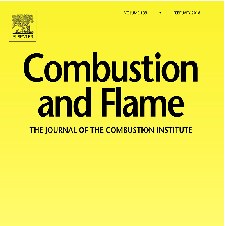At Samara University, the work on megagrant “Development of physically grounded combustion models” guided by Alexander Mebel, Professor at Florida International University, continues. Regular research results within the framework of megagrant developed into a series of four scientific articles by members of Research Laboratory NIL-101 published in Combustion and Flame as well as Journal of Physical Chemistry A, leading international editions on combustion problems.
Within the limits of megagrant, allocated by the Government of the Russian Federation, NIL-101 scientists “Physics and chemistry of combustion” learn the mechanisms of formation and destruction of soot and its precursor substances – polycyclic aromatic hydrocarbon (PAHs) in combustion chambers. According to the research results, the community of scientists will suggest to engine engineers physically grounded combustion models for designing fundamentally new ecological and power efficient combustion chambers for gas-turbine engines.
“PAHs and soot are among the most dangerous for human health. International regulations regiment their permissible content in the exhaust of divergent engines, clarifies the NIL-101 member, Professor Valeriy Azyazov. We are working out the gamechanging technologies of power efficient and clean combustion of hydrocarbon fuels, which will amply satisfy the international emissions regulations”.
The scholar says that, given the present-day level of development in science and technology, resolution of such tasks is found on the basis of novel knowledge on detailed mechanisms of elementary atomic and molecular processes involved in formation and disintegration of harmful substances.
“Formation of PAHs and soot presents a complex process, which is accompanied by an abundance of physicochemical conversions. However, a turning point in sooting is the formation of the first aromatic six-membered ring compound – benzene (C6H6), one of whose precursors is five-membered ring compound cyclopentadienyl (C5H5)”, proceeds the Professor. NIL-101 members have found, on the one hand, reactionary ways leading to formation of benzene from C5H5, and, on the other hand, means leading to disintegration of cyclopentadienyl in the course of its collisions with oxidizers, molecular and atomic oxygen, let alone hydroxy group. In the researches-in-question, latter-day methods of high-level quantum chemistry as well as novel approaches of statistical physics were used for the purpose of finding kinetic constants of elementary processes. The working data resulted in a series of four scientific articles published in leading international editions on combustion problems, namely Combustion and Flame, indexed by Scopus and Web of Science, not to mention Journal of Physical Chemistry A.
“Our researches allow gaining a deeper understanding of the mechanisms of formation and growth of PAHs and soot, including their disintegration through oxidation (decomposition) in hydrocarbon flames. A notable contribution to this work was made by young scholars, holders of Master’s Degree Galiya Galimova and Vladislav Krasnouhov, post-graduate students Anna Gildina and Artyom Oleinikov – a vivid example of educating students by means of involvement in real-life scientific-research work”, concluded Valeriy Azyazov.
